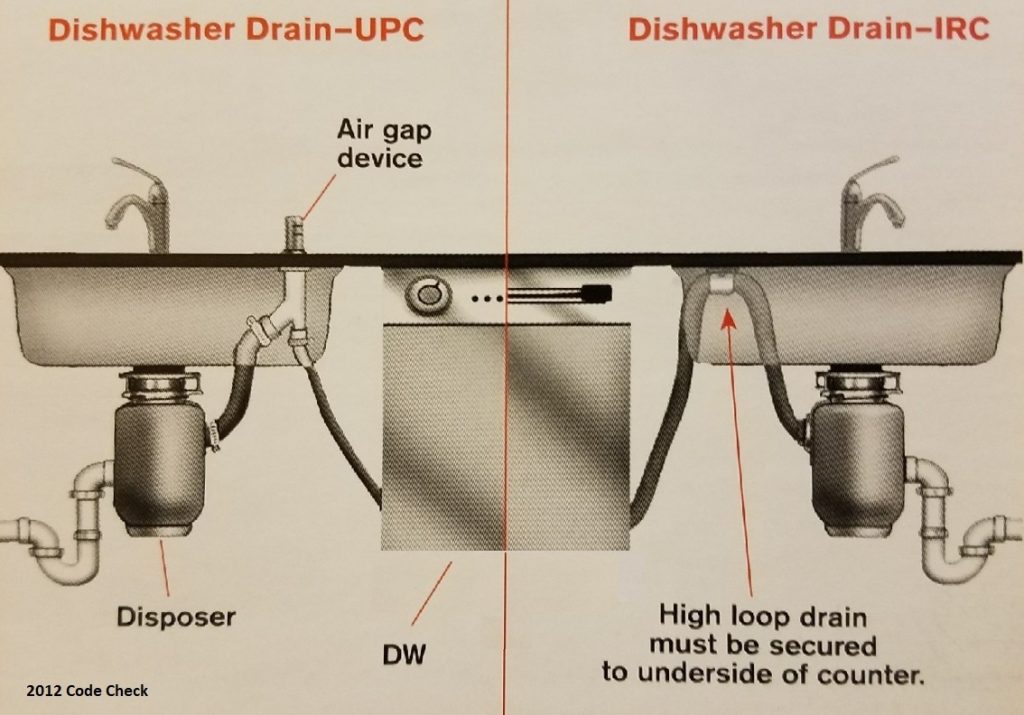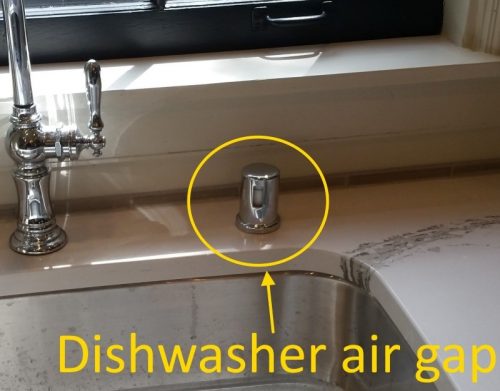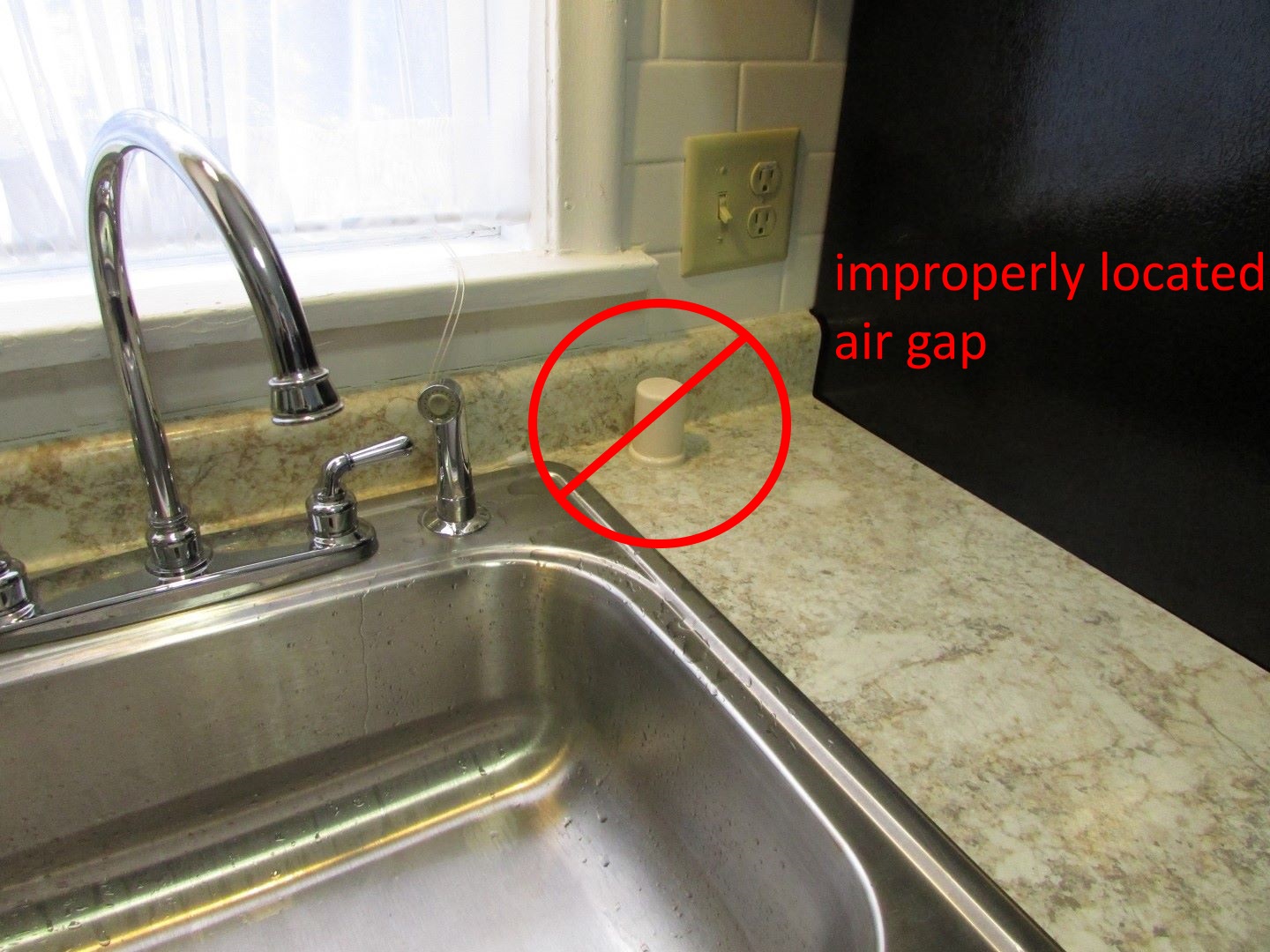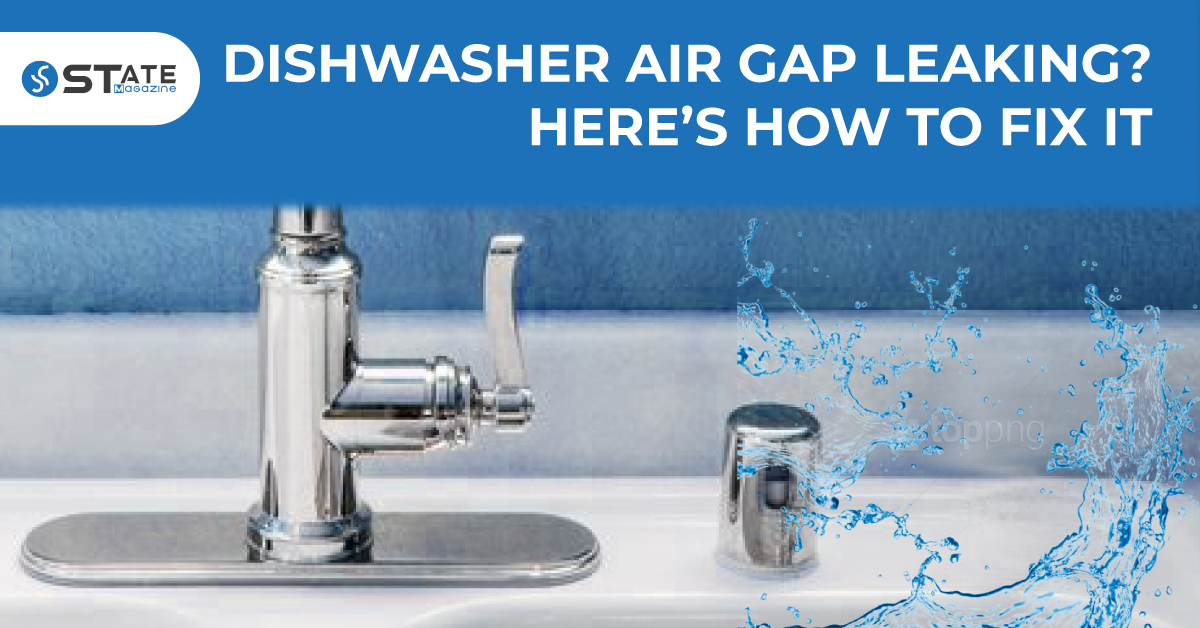If you've ever looked under your kitchen sink, you may have noticed a small cylindrical device attached to the garbage disposal or drain pipe. This is called an air gap, and it is a crucial component of your dishwasher's plumbing system. An air gap serves as a backflow prevention mechanism, ensuring that dirty water from your sink cannot enter your dishwasher and contaminate your clean dishes. It also helps to prevent clogs and backups in your dishwasher's drain line. If you're unfamiliar with the concept of an air gap, don't worry. In this article, we will cover everything you need to know about this essential kitchen sink dishwasher air gap.What is an Air Gap in a Dishwasher?
Installing an air gap for your dishwasher is a relatively simple process, and it can typically be completed in just a few steps. Here's a quick guide to help you get started: 1. Locate the air gap hole on your kitchen sink or countertop. This is usually a small, circular hole located next to the faucet. 2. Insert the threaded end of the air gap into the hole. If the hole is too small, you may need to enlarge it with a drill or file. 3. Secure the air gap in place with the mounting nut provided. 4. Connect the dishwasher drain hose to the air gap's top port. 5. Connect the garbage disposal or drain pipe to the bottom port of the air gap. 6. Turn on the water supply and check for any leaks. It's important to note that some local plumbing codes may require additional steps or the use of specialized plumbing fittings during the installation process. Be sure to check with your local authorities before attempting to install an air gap yourself.How to Install an Air Gap for a Dishwasher
In most cases, yes, you do need an air gap for your dishwasher. As mentioned earlier, an air gap is an essential backflow prevention device that helps to keep your dishwasher and sink water separate. Some older homes may not have an air gap installed, as they were not required at the time of construction. However, it is still a good idea to install one to prevent any potential contamination of your dishes and to comply with current plumbing codes. If you're unsure whether your home has an air gap already, you can check by looking under the kitchen sink or contacting a professional plumber to inspect your dishwasher's plumbing system.Do I Need an Air Gap for My Dishwasher?
Over time, debris and grime can build up inside your air gap, potentially causing clogs and affecting its functionality. Regularly cleaning your air gap can help prevent these issues and keep your dishwasher running smoothly. Here's how to clean your air gap in a few simple steps: 1. Remove the cover of the air gap by twisting and pulling it off. 2. Use a small brush or toothbrush to scrub the inside of the air gap to remove any buildup or debris. 3. Rinse the air gap with water and replace the cover. You can also use a mixture of vinegar and water to clean your air gap. Simply pour the solution into the air gap and let it sit for a few minutes before scrubbing and rinsing.How to Clean an Air Gap for a Dishwasher
If you notice water leaking from your air gap, it could be a sign of a clog or a problem with the air gap itself. Here are a few steps you can take to fix a leaking air gap: 1. Check for any visible clogs or obstructions in the air gap's opening. 2. If there are no visible clogs, remove the cover and clean the inside of the air gap as described in the previous section. 3. Check the connections between the air gap, dishwasher drain hose, and garbage disposal or drain pipe. Tighten any loose connections or replace any damaged parts. 4. If the leak persists, it may be a sign of a more significant issue with your plumbing system. In this case, it's best to contact a professional plumber for assistance.How to Fix a Leaking Air Gap for a Dishwasher
If your air gap is damaged or no longer functioning, you may need to replace it. Here's how: 1. Turn off the water supply to your dishwasher. 2. Unscrew and remove the mounting nut holding the air gap in place. 3. Disconnect the dishwasher drain hose and the garbage disposal or drain pipe from the air gap. 4. Install the new air gap by following the steps outlined in the "How to Install an Air Gap for a Dishwasher" section. 5. Turn the water supply back on and check for any leaks.How to Replace an Air Gap for a Dishwasher
If you notice that your dishwasher is not draining properly, it could be a sign of a clogged air gap. Here's how to unclog it: 1. Remove the cover of the air gap and check for any visible clogs or obstructions in the opening. 2. Use a small brush or toothbrush to dislodge and remove any debris. 3. Rinse the air gap with water and replace the cover. In some cases, a more severe clog may require the use of a plumber's snake or the assistance of a professional plumber.How to Unclog an Air Gap for a Dishwasher
To keep your air gap functioning correctly, it's essential to perform regular maintenance. Here are a few tips: 1. Clean your air gap at least once every three months to remove any buildup or debris. 2. Check the connections between the air gap, dishwasher drain hose, and garbage disposal or drain pipe for any signs of wear or damage and replace as needed. 3. If you notice any unusual noises or changes in your dishwasher's performance, it's best to contact a professional plumber for an inspection.How to Maintain an Air Gap for a Dishwasher
If you're experiencing any problems with your dishwasher, it's always best to start by inspecting the air gap. Some common issues that can be resolved by troubleshooting your air gap include clogs, leaks, and unusual noises. Refer to the previous sections for tips on how to fix these issues and maintain your air gap's functionality.How to Troubleshoot an Air Gap for a Dishwasher
When it comes to choosing an air gap for your dishwasher, there are a few factors to consider: 1. Check your local plumbing codes to ensure you choose an air gap that complies with the regulations in your area. 2. Consider the design and style of your kitchen sink to choose an air gap that will blend in seamlessly. 3. Look for an air gap made of durable materials that can withstand regular use and exposure to water. 4. Consult with a professional plumber for advice on the best air gap for your specific dishwasher and plumbing system.How to Choose the Right Air Gap for a Dishwasher
The Benefits of Installing a Kitchen Sink Dishwasher Air Gap

What is a Kitchen Sink Dishwasher Air Gap?
 Most homeowners are familiar with the concept of a dishwasher, but not many have heard of a kitchen sink dishwasher air gap. This small but essential piece of equipment is a small cylindrical device that is typically installed on the corner of a kitchen sink. It is designed to prevent dirty water from flowing back into your dishwasher and contaminating your clean dishes.
Most homeowners are familiar with the concept of a dishwasher, but not many have heard of a kitchen sink dishwasher air gap. This small but essential piece of equipment is a small cylindrical device that is typically installed on the corner of a kitchen sink. It is designed to prevent dirty water from flowing back into your dishwasher and contaminating your clean dishes.
Why is it Important?
 The kitchen sink dishwasher air gap may seem like a minor detail, but it plays a crucial role in maintaining the cleanliness and efficiency of your kitchen. Without an air gap, dirty water can flow back into your dishwasher, causing unpleasant odors, clogs, and even potential health hazards. This can also lead to costly repairs and replacements for your dishwasher.
Installing a kitchen sink dishwasher air gap is a simple and affordable solution that can save you from a lot of hassle in the long run.
It is especially important for homes with a garbage disposal, as food particles and debris can easily clog the dishwasher drain and cause the water to back up. The air gap acts as a barrier between the dishwasher and the sink, preventing any dirty water from entering the dishwasher.
The kitchen sink dishwasher air gap may seem like a minor detail, but it plays a crucial role in maintaining the cleanliness and efficiency of your kitchen. Without an air gap, dirty water can flow back into your dishwasher, causing unpleasant odors, clogs, and even potential health hazards. This can also lead to costly repairs and replacements for your dishwasher.
Installing a kitchen sink dishwasher air gap is a simple and affordable solution that can save you from a lot of hassle in the long run.
It is especially important for homes with a garbage disposal, as food particles and debris can easily clog the dishwasher drain and cause the water to back up. The air gap acts as a barrier between the dishwasher and the sink, preventing any dirty water from entering the dishwasher.
Other Benefits
 Aside from preventing contamination and clogs, a kitchen sink dishwasher air gap also has other benefits.
It helps to improve the overall hygiene of your kitchen, as it prevents any cross-contamination between your sink and dishwasher.
It also ensures that your dishwasher is running efficiently, as it prevents any blockages that can affect its performance.
Moreover,
installing a kitchen sink dishwasher air gap can also add value to your home.
It is a small but essential feature that potential buyers will appreciate, as it shows that your kitchen is equipped with the latest and most efficient technology.
Aside from preventing contamination and clogs, a kitchen sink dishwasher air gap also has other benefits.
It helps to improve the overall hygiene of your kitchen, as it prevents any cross-contamination between your sink and dishwasher.
It also ensures that your dishwasher is running efficiently, as it prevents any blockages that can affect its performance.
Moreover,
installing a kitchen sink dishwasher air gap can also add value to your home.
It is a small but essential feature that potential buyers will appreciate, as it shows that your kitchen is equipped with the latest and most efficient technology.
Conclusion
 In conclusion, a kitchen sink dishwasher air gap is an essential component of a well-designed kitchen. Its benefits go beyond just preventing contamination and clogs; it also improves hygiene, ensures efficiency, and adds value to your home. If you are considering a kitchen renovation or simply looking for ways to improve your current kitchen,
consider installing a kitchen sink dishwasher air gap for a cleaner, more efficient, and more valuable kitchen.
In conclusion, a kitchen sink dishwasher air gap is an essential component of a well-designed kitchen. Its benefits go beyond just preventing contamination and clogs; it also improves hygiene, ensures efficiency, and adds value to your home. If you are considering a kitchen renovation or simply looking for ways to improve your current kitchen,
consider installing a kitchen sink dishwasher air gap for a cleaner, more efficient, and more valuable kitchen.

































































